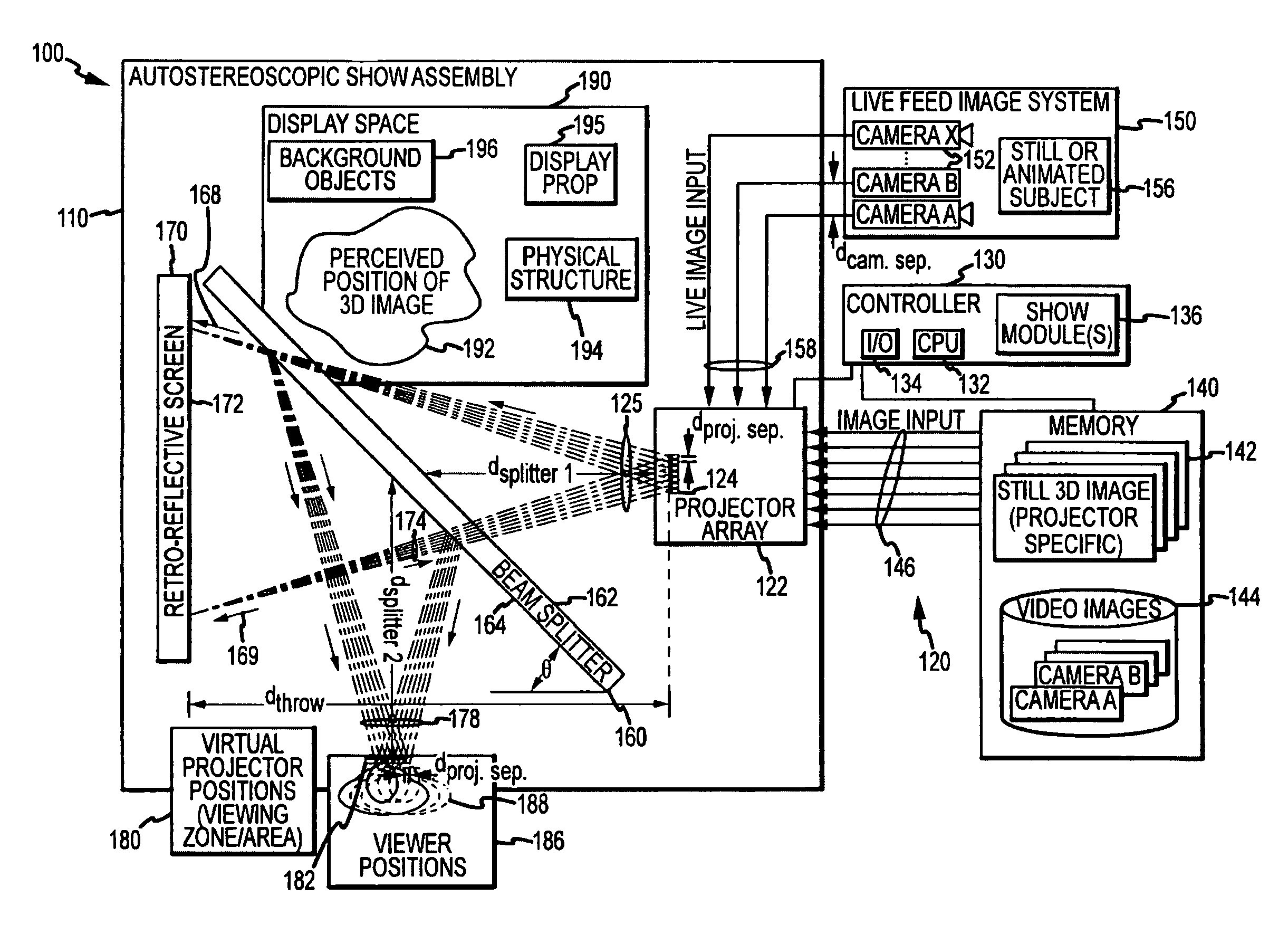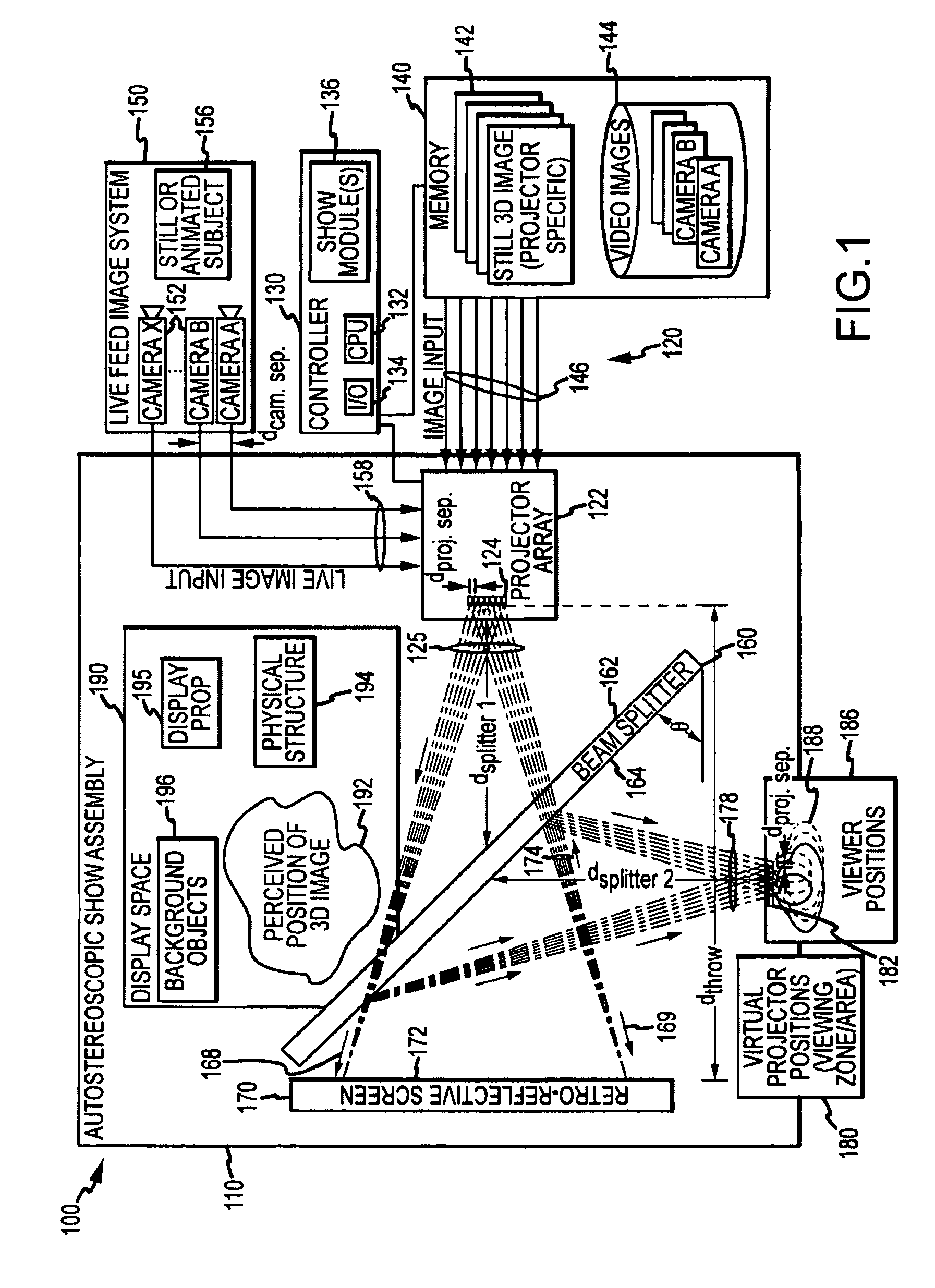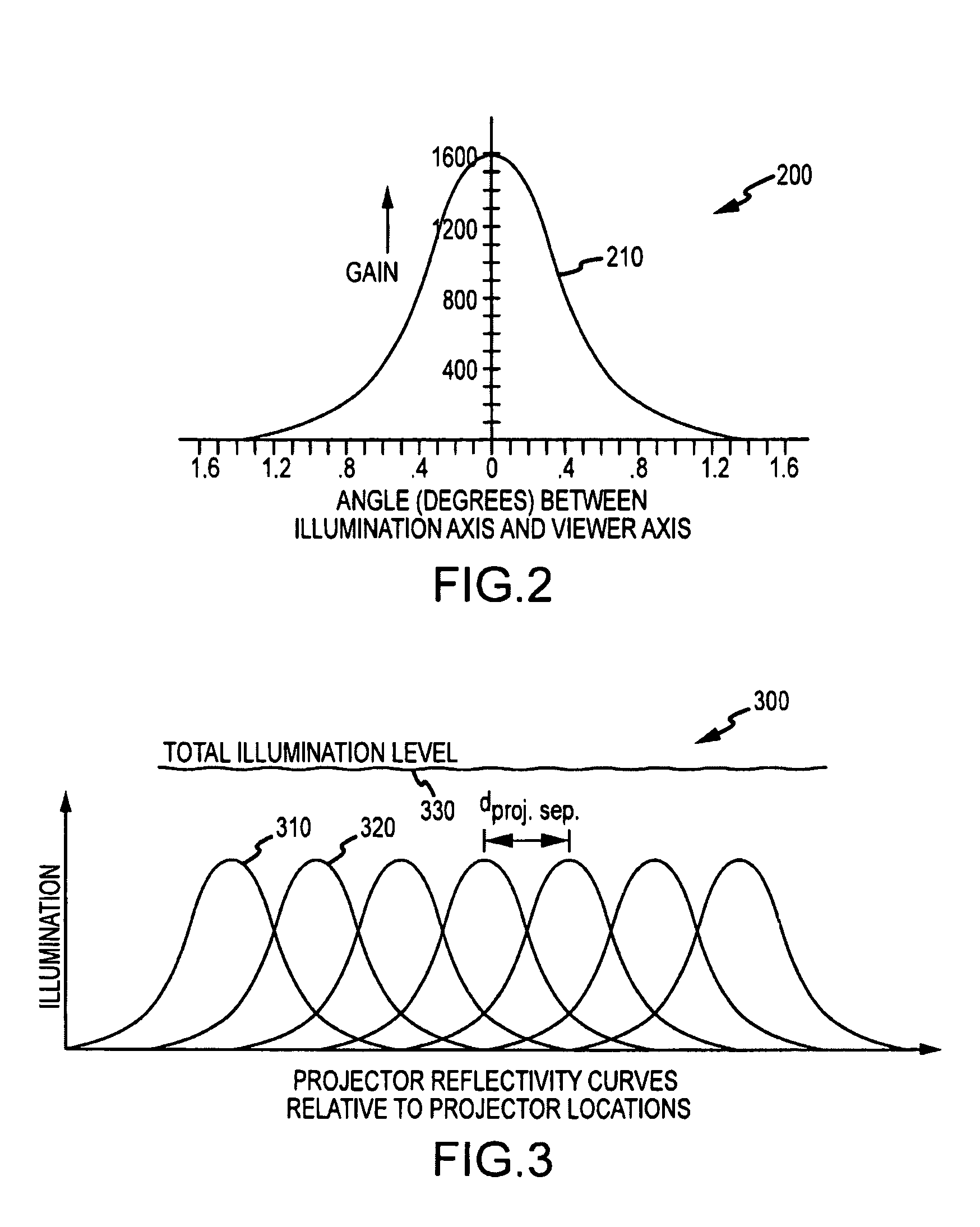Autostereoscopic projection system
a projection system and autostereoscopic technology, applied in the field of autostereoscopic projection system and autostereoscopic projection system, can solve the problems of pseudo-stereo images in prior systems, and achieve the effects of low resolution, small image, and low and/or varying brightness
- Summary
- Abstract
- Description
- Claims
- Application Information
AI Technical Summary
Benefits of technology
Problems solved by technology
Method used
Image
Examples
Embodiment Construction
[0025]Briefly, embodiments of the present invention are directed to 3D or autostereoscopic projection systems, and associated methods, for projecting or displaying an image having depth to one or more viewers. The projection method involves providing a projector array or assembly with one or more rows of projectors that are each spaced apart a projector distance (e.g., projectors within a row but in differing columns and projectors in differing rows are spaced apart from neighboring or adjacent projectors by about the human interoccular distance or less). An image stream or image data is input or fed to each of these projectors, with the images being provided to each projector from a camera or a camera position / POV that typically corresponds in location to that of the projector in the array (e.g., similar spacing of cameras or software tools / cameras used in animation). The projectors transmit along a number of spaced apart, parallel paths onto a retroreflective screen (or surface of...
PUM
 Login to View More
Login to View More Abstract
Description
Claims
Application Information
 Login to View More
Login to View More - R&D
- Intellectual Property
- Life Sciences
- Materials
- Tech Scout
- Unparalleled Data Quality
- Higher Quality Content
- 60% Fewer Hallucinations
Browse by: Latest US Patents, China's latest patents, Technical Efficacy Thesaurus, Application Domain, Technology Topic, Popular Technical Reports.
© 2025 PatSnap. All rights reserved.Legal|Privacy policy|Modern Slavery Act Transparency Statement|Sitemap|About US| Contact US: help@patsnap.com



